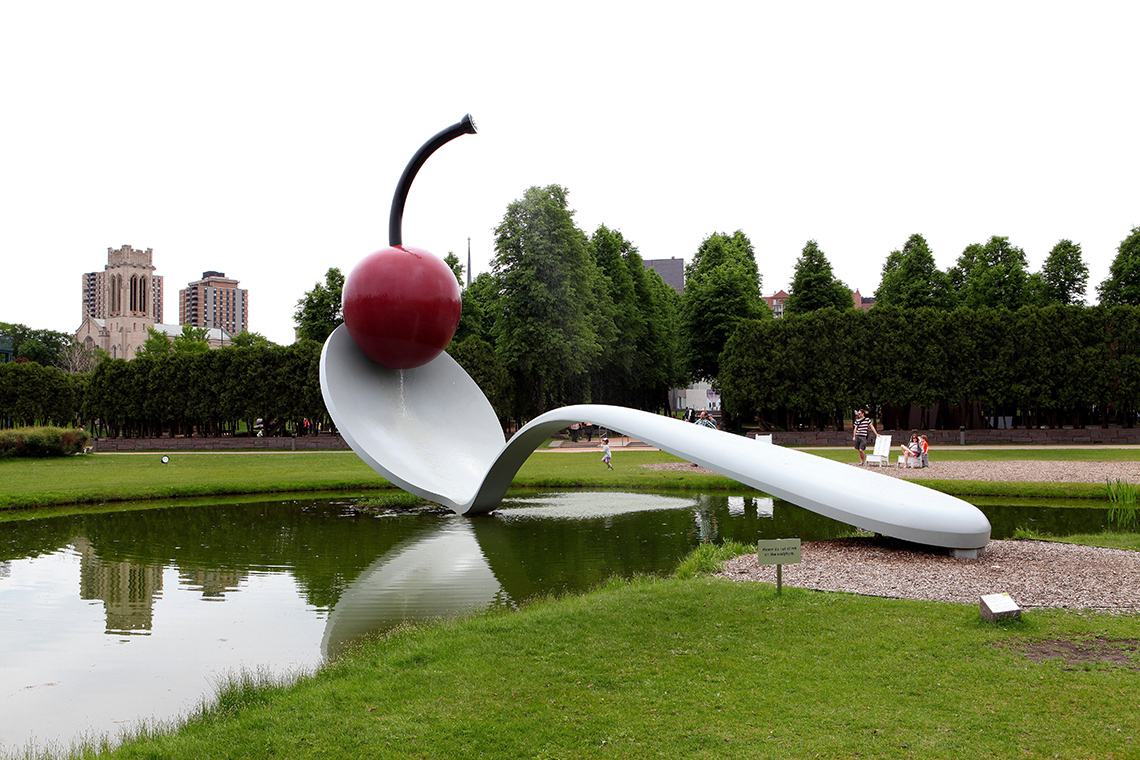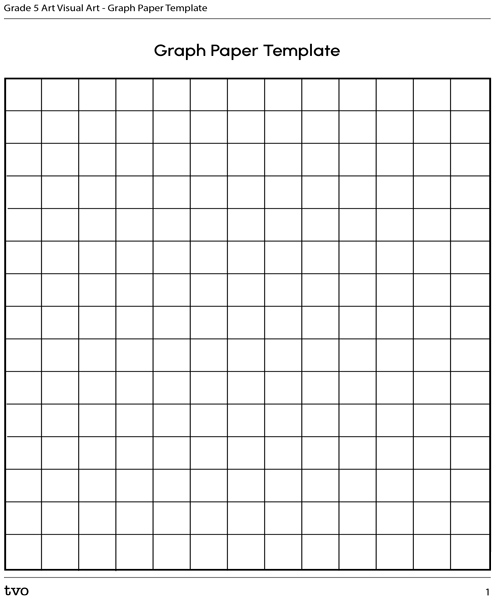Minds On
Let's get started!
Notice and wonder
Explore the following examples of artwork.
What do you notice about the following artwork?
Is the artwork realistic? Why or why not?
A carousel of two images. Image 1: Spoonbridge and Cherry by Claes Oldenburge and Coosje van Bruggen, 1988. This image is a photograph of an art installation in the Minneaspolis Sculpture Garden. The background shows a grassy park with a row of trees at the back. Behind the trees are buildings from the skyline of the city. At the front of the photo is a small pond of water. The sculpture is a huge silver spoon that is bent at the point where the bowl of the spoon begins. It is actually a bridge that spans across the pond. At the tip of the spoon sits a bright red cherry with a long, black stem coming out of the top. Image 2: Les valeurs personnelles (Personal Values) by Rene Magritte, 1952. This image is an abstract painting of a bedroom filled with objects. There is a comb leaning against the wall that is the height of the room. It is on top of a bed that is approximately half of the length of the comb. There is a cupboard in the room that is to scale but there is a glass goblet that is almost as large as the cupboard and a matchstick that is almost as long as the bed. Finally, there is a makeup brush and powder set that are to scale beside the comb and goblet but too large when compared to the cupboard and bed.
Action
Get ready, get set…
Scale and perspective
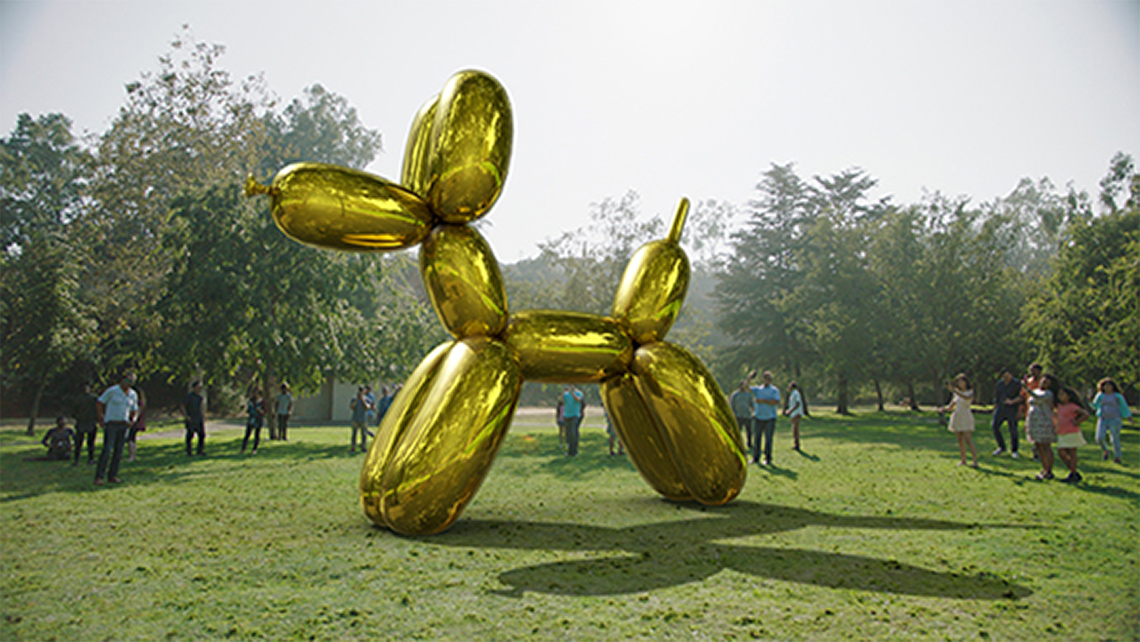
An overlarge sculpture meant to look like an oversized balloon animal. The sculpture is in a park surrounded by people. The sculpture is approximately 3 to 4 times the size of a person.
Artists use different tools and techniques to create perspective in their work. This creates the illusion of depth in their artwork. Sometimes, artists are trying to create artwork that appears realistic. They create a foreground, middle ground, and background, and use a scale that is mimics what the audience might experience in real life.
Press the following tabs to access definitions of perspective and scale.
For example, in the painting The Monet Family in Their Garden at Argenteuil by Edouard Manet, the artist created realistic forms. The people and animals in the middle ground of the painting are larger than the details in of the flowers and trees in the background. The size of the flowers and trees in relation to the people is also realistic.
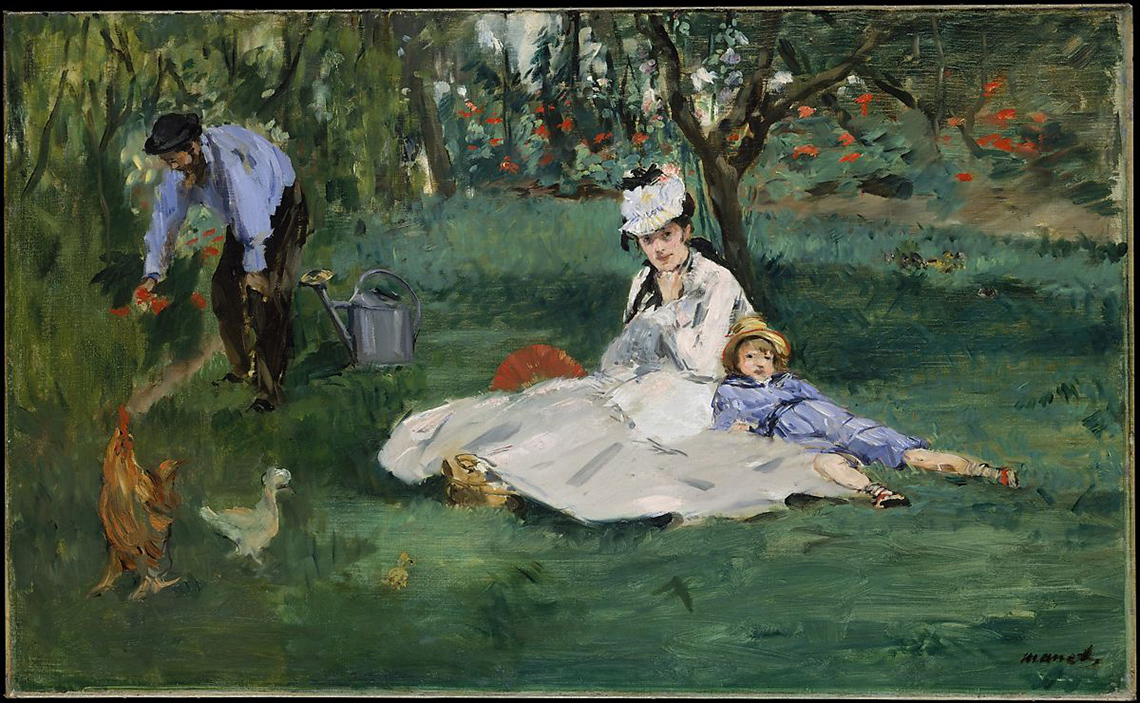
The Monet Family in Their Garden at Argenteuilby Edouard Manet, 1874
A realism painting with three people. The woman is sitting down beside a tree. The man is bent over, touching the flowers. There is a watering can next to him. The child is laying down partially on the woman. There is also a duck and a chicken walking towards the woman and child. In the background, there is a large tree.
In realist art, artists use scale that mimics what someone might find in real life. That is how they want the audience to experience their work.
Improbable scale
While some artists create their artwork using a realistic scale, others might use an improbable scale. An improbable scale can be used to create imaginary creatures, objects, and/or landscapes.
Artists use improbable scale as a way to make a statement or get a reaction from an audience. One important aspect of improbable scale is the exaggerated ratio of one object or subject to another.
Let's explore the following artwork.
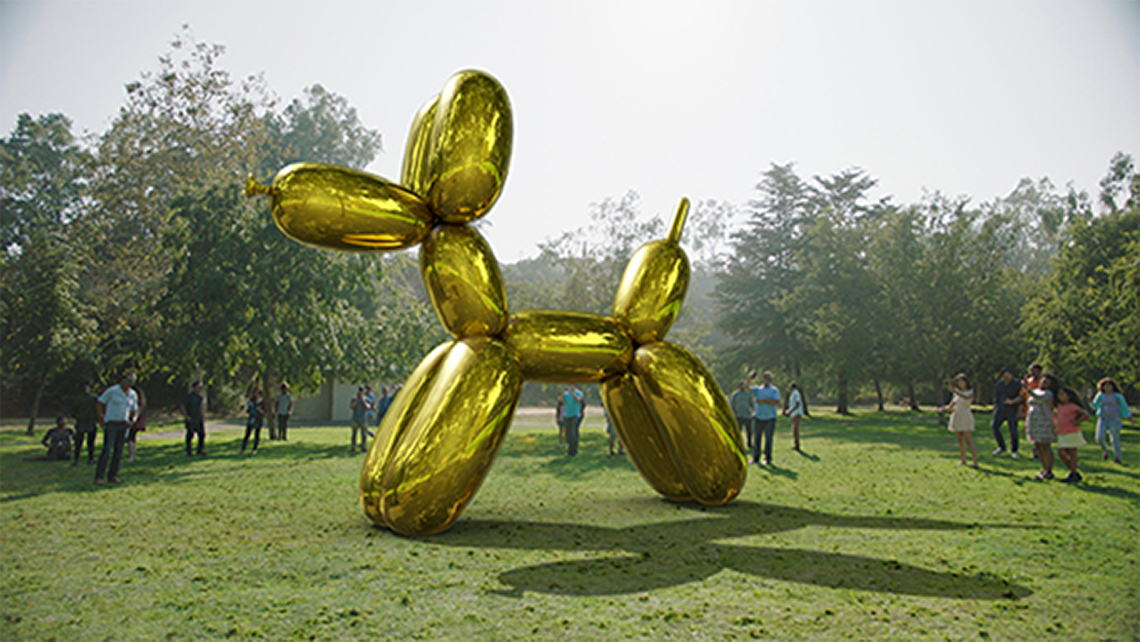
An overlarge sculpture meant to look like an oversized balloon animal. The sculpture is in a park surrounded by people. The sculpture is approximately 3 to 4 times the size of a person.
What kind of statement do you think the artist is trying to make?
Press ‘Possible Answer’ to learn what statement the artist is making.
By using improbable scale, the artist might be trying to surprise the audience.
Is the artist’s use of improbable scale effective?
Press ‘Possible Answer’ to access if the use of improbably scale was effective or not.
In Jeff Koon’s Snapchat: Augmented Reality World Lenses, the balloon dog is much larger than the people who surround it. It created a sense of excitement and disbelief which means the artist has effectively used improbable scale.
Let’s return to the artwork from the Minds On.
Explore the artwork again, and consider, how are they using improbable scale to emphasize certain parts of their work? What do you focus on when exploring the artwork?
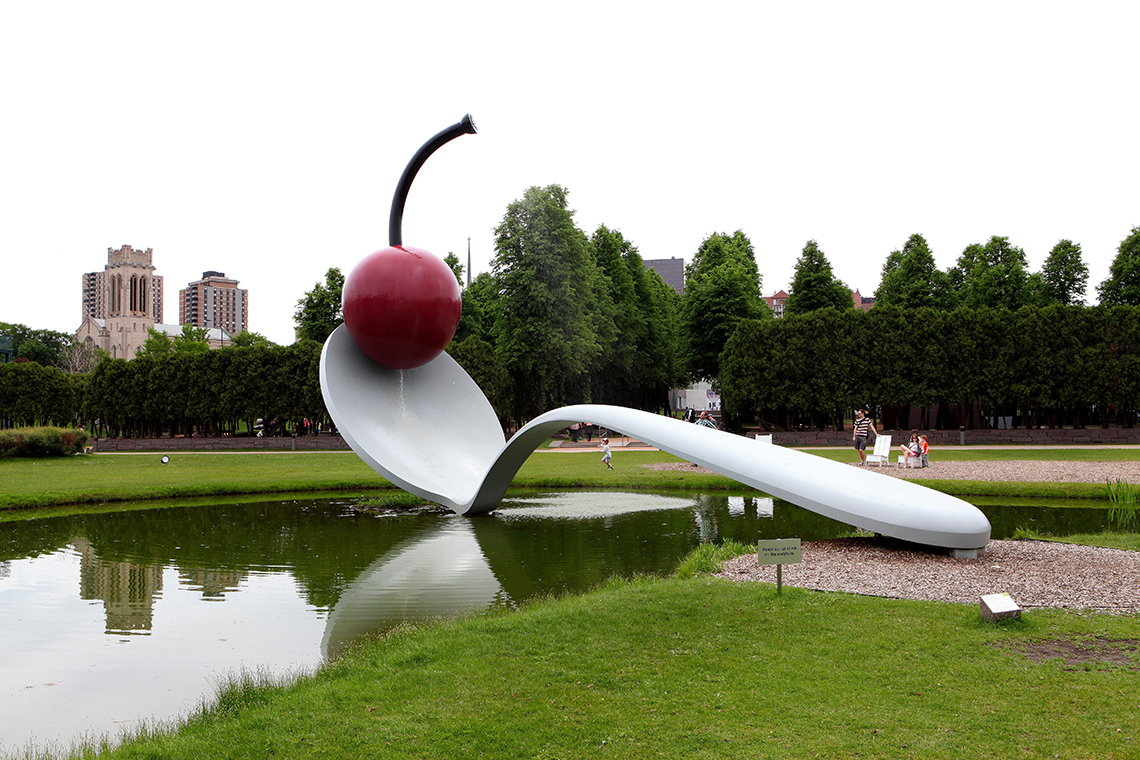
This image is a photograph of an art installation in the Minneaspolis Sculpture Garden. The background shows a grassy park with a row of trees at the back. Behind the trees are buildings fron the skyline of the city. At the front of the photo is a small pond of water. The sculpture is a huge silver spoon that is bent at the point where the bowl of the spoon begins. It is actually a bridge that spans across the pond. At the tip of the spoon sits a bright red cherry with a long, black stem coming out of the top.
Press ‘Possible Answer’ to access how the artist are using improbable scale.
This sculpture uses an improbable scale to allow for the exploration of the forms and colours of the spoon and cherry. If sculpture was created using a realistic scale, the spoon and cherry would be too small to explore in the same detail.
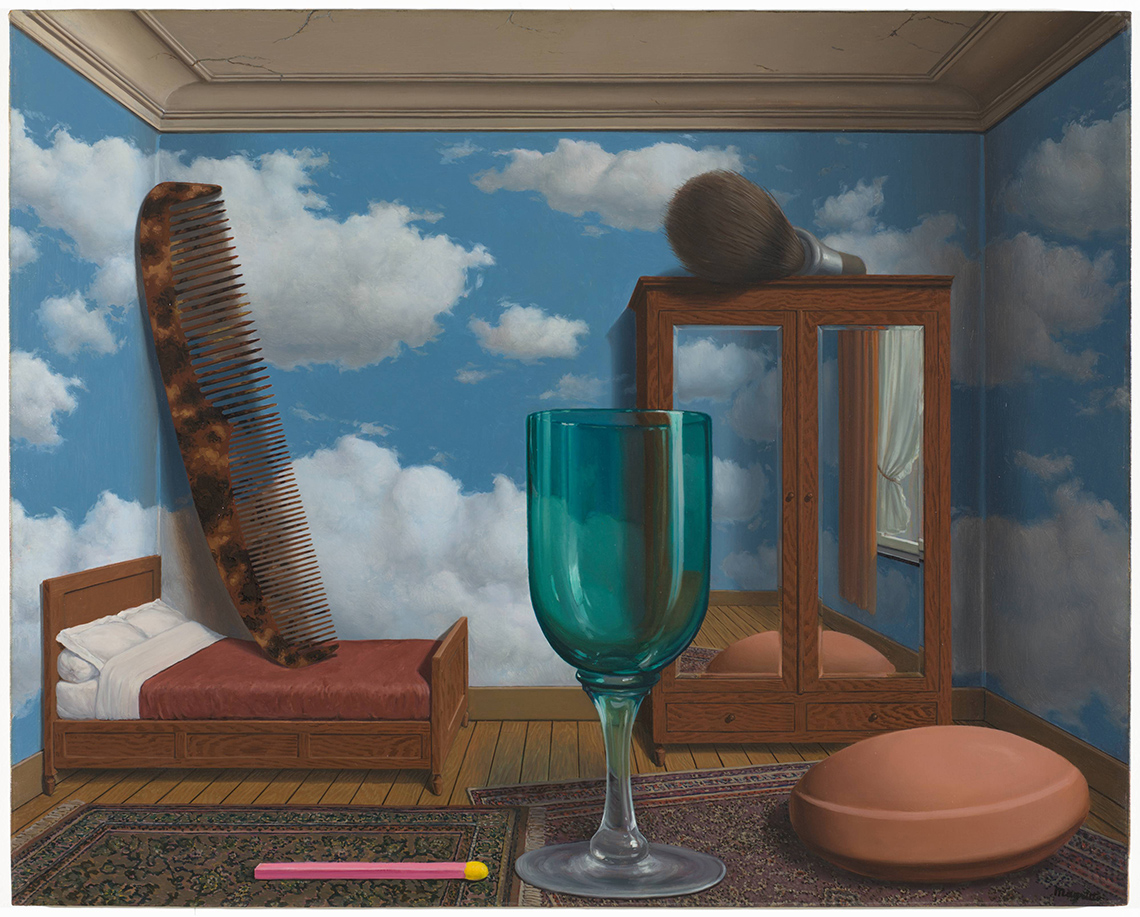
This image is an abstract painting of a bedroom filled with objects. There is a comb leaning against the wall that is the height of the room. It is on top of a bed that is approximately half of the length of the comb. There is a cupboard in the room that is to scale but there is a glass goblet that is almost as large as the cupboard and a matchstick that is almost as long as the bed. Finally, there is a makeup brush and powder set that are to scale beside the comb and goblet but too large when compared to the cupboard and bed.
Press ‘Possible Answer’ to access how the artist is using improbable scale.
This work by Rene Magritte demonstrates an improbable large scale. In a realistic scale, the comb, glass, matchstick brush and make-up tool would be much smaller in relation to the bed and armoire. Magritte also includes sky in the background which makes it seem that the whole room is floating in the sky.
Why do you think artists use improbable scale?
Press ‘Sample Answer’ to access why artists use improbable scale.
Artists use improbable scale to make a statement or get a reaction from an audience.
Go!
Explore the following example of artwork.
What do you notice about how the artist has created their painting?
How have they used improbable scale to emphasize certain parts of their work?
If you could create your own artwork using improbable scale, what might you include?
Record your responses using a method of your choice.
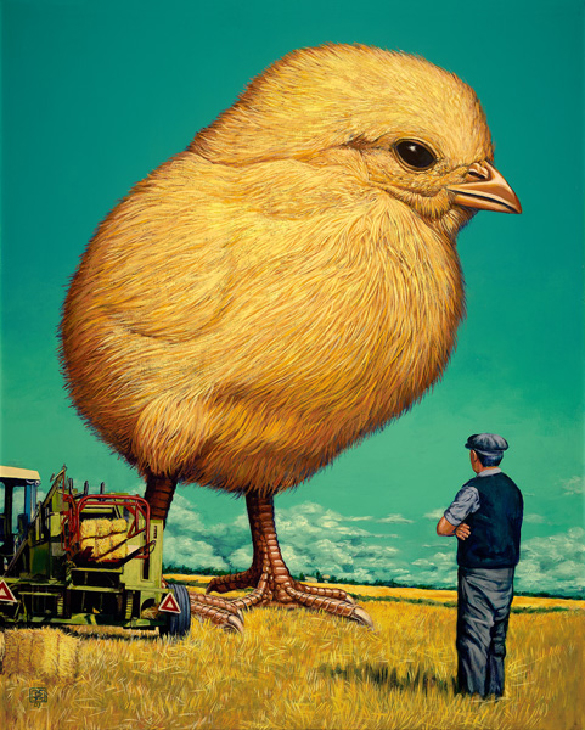
Curiosity by Jeff Jordan, 2003
A grassland with a piece of farming equipment on the left side of the painting. Then there is a person standing in front of a chick, facing towards the chick. The chick is four times the size of the person. The artist is using improbable scale to show the size difference between the chick and the person as well as the farm equipment.
Consolidation
Putting it all together
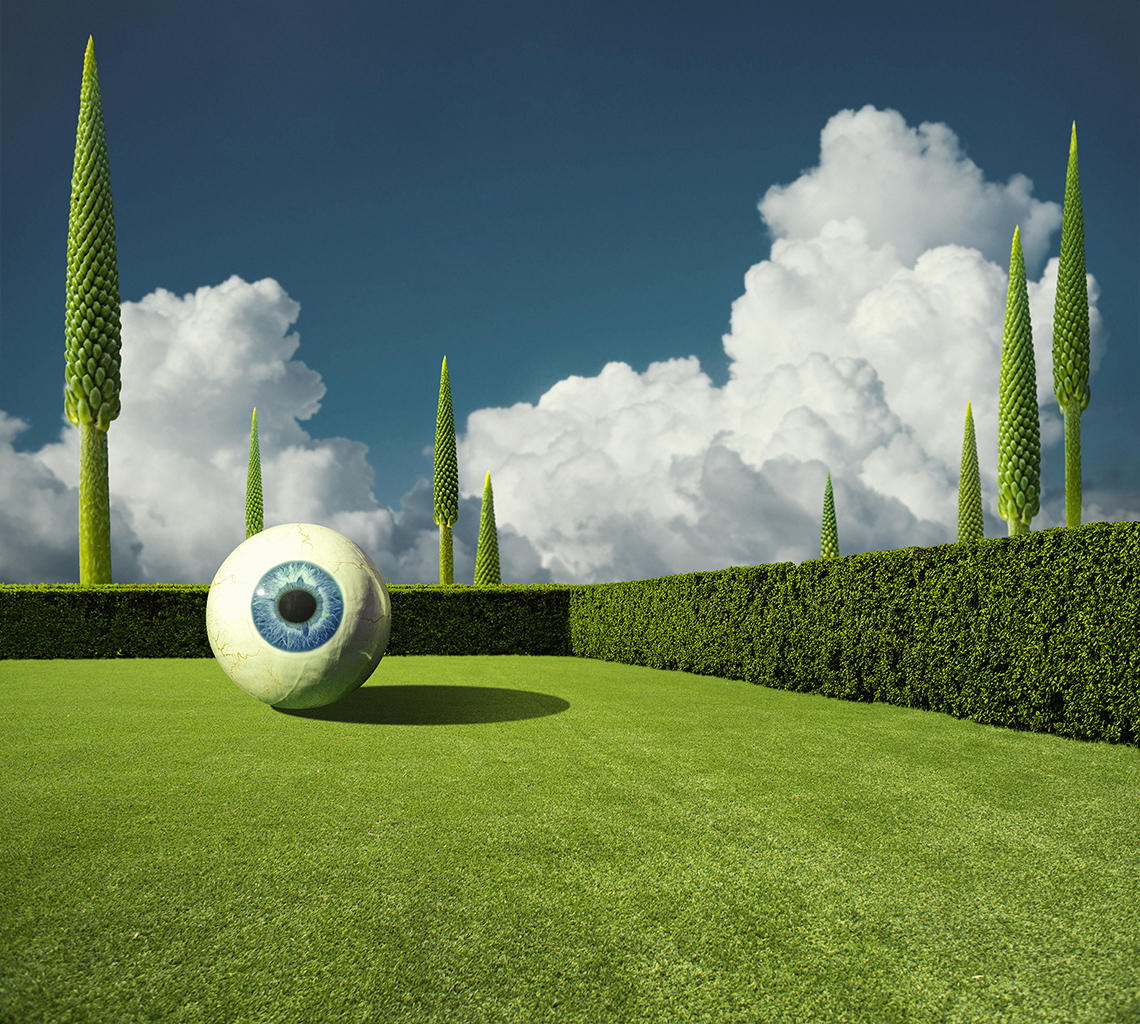 Now that we have explored the use of improbable scale in art, you will have the opportunity to create your own piece of art using an improbable scale.
Now that we have explored the use of improbable scale in art, you will have the opportunity to create your own piece of art using an improbable scale.
Materials Needed
Materials you might need
Possible materials you might need for this learning activity:
- paper
- pencils
- eraser
- pencil crayons/crayons/markers (optional)
or
- found objects
Student Success
Exploring digital creation options
When you are considering digital creation options, explore the variety of digital applications available!
Note to teachers: See your teacher guide for collaboration tools, ideas and suggestions.
Safety
Always be sure to do your safety checks before you do an activity.
Before you begin, check:
Now it’s your turn to create! Consider the following options to check out a variety of methods to create your art. Choose one option to try out.
Option 1: Description
Create an audio or written description of what you would do to create your art piece. Include what you would draw or create.
What would you include in your artwork? Create a list. Next, describe the size of different parts of your design (i.e. I would include a bird that is the size of a car, and an ant that is the size of a bear. I would include a person that is as small as an ant, and a leave that is the size of a car.) Include the materials you might use to create your artwork.
Option 2: Digital
Create a drawing using a digital application of your choice. Start by planning what kind of art piece you will create. How will you incorporate improbable scale into your artwork?
Option 3: Materials
Create a drawing of a setting, imaginary creature, or an image of your choice. You may also create a sculpture using found objects.
Possible Materials:
- paper
- pencils
- eraser
- pencil crayons/crayons/markers (optional)
or
- found objects
Step 1
What would you include in your artwork? Consider the different parts of your design. Will you focus on one object or several? Once you have decided what to include, think about how you will create them using an improbable scale.
Tip
Think about how you will use other items/objects to demonstrate the improbable scale of your chosen object. (i.e. I would include a bird that is the size of a car, and an ant that is the size of a bear. I would include a person that is as small as an ant, and a leaf that is the size of a car.)
Explore the following images for inspiration.
A carousel of two images. Image1: A bird that is the size of a car next to an ant that is the size of a bear. There are graph lines laid overtop the image. Image 2: An image of a person that is as small as an ant, and a leaf that is the size of a car against a background of a room. There are graph lines laid overtop the image.
Step 2
Begin to draw out or build your artwork. Take your time to make the adjustments you need.
Use the Graph Paper Template to create your artwork. If you would like, you can use speech-to-text or audio recording tools to record your thoughts.
Portfolio
Track your progress
If possible, share your beautiful art and/or description with a partner! If you have created a found object sculpture, you may also take a photo of your work.
If you have a portfolio, you can put your art there to track your progress over time.
Reflection
As you read through these descriptions, which sentence best describes how you are feeling about your understanding of this learning activity? Press the button that is beside this sentence.
I feel…
Now, record your ideas using a voice recorder, speech-to-text, or writing tool.
